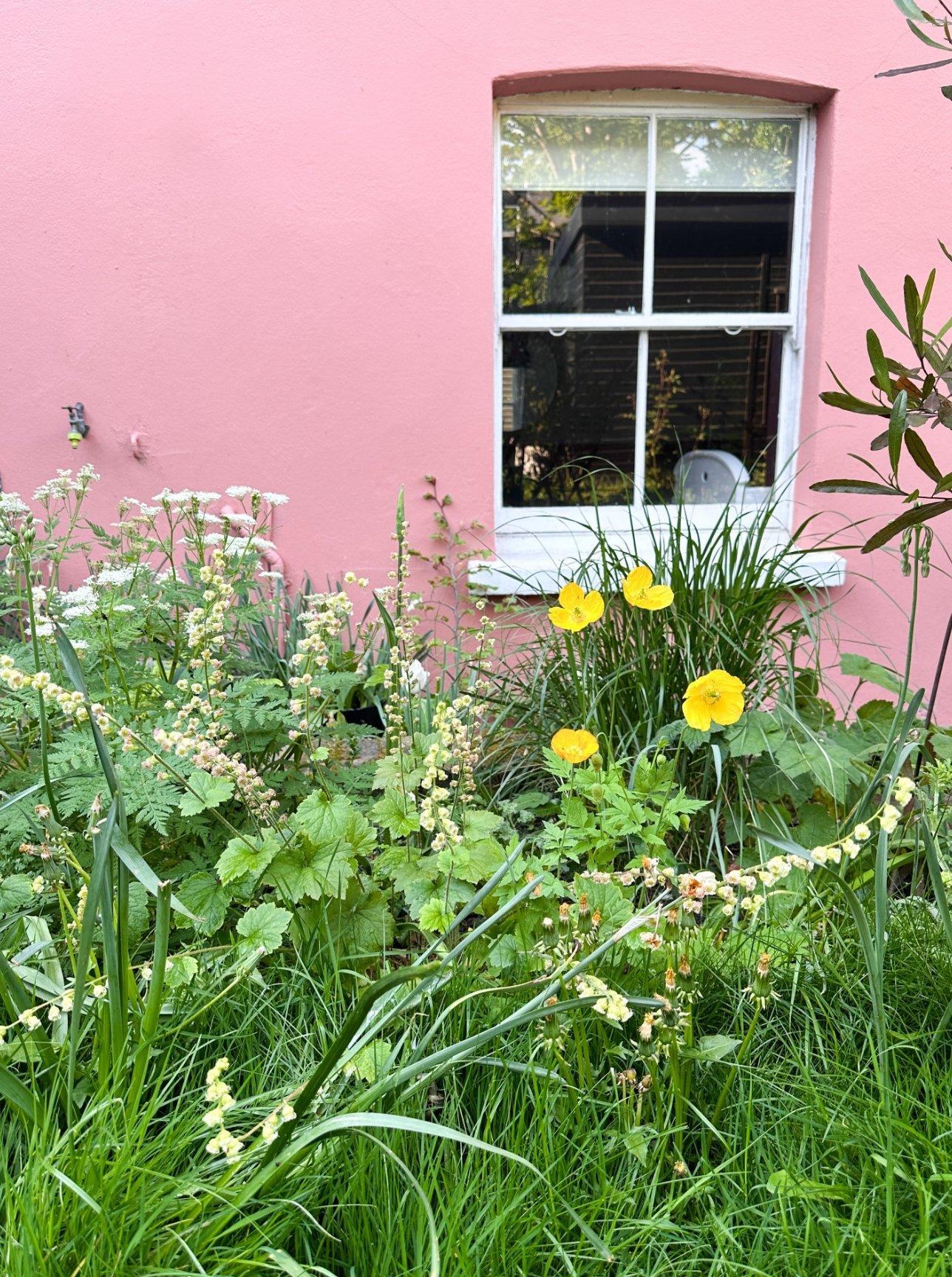EMBRACING THE CHAOS
Gardening is less groomed – Alice Vincent is into it

Words
ALICE VINCENT
It’s funny how things change. When we exchanged contracts on my home – the first one that had a garden, with soil and a brick wall and a lawn, rather than the sky-based balconies I’d tended to for the previous seven years – I celebrated by buying bare-root peonies. I prepared for my future garden as if it were a particularly adventurous gap year, with fervour and nervous anticipation. There would need to be a shed to house the lawn mower, a compost bin and mulch, a cold frame and a seed store. Nothing would be chaotic, all would be orderly in pursuit of horticultural near-perfection.
Five years on, and I’m bragging on Instagram about how I only mow my lawn once a year – twice, if I’m feeling particularly keen.
It’s not that I wouldn’t deny being a little lazy in the garden; there are definitely tasks I can’t entirely summon the energy to undertake. But it’s more that, just as I made all those choices to order and organise and even, at one particularly low point, make a spreadsheet of all the plants I had put in and how to look after them, I have spent the past couple of years actively choosing not to do these things. The grass grows soft and meadowy. The aphids gather on the rosebuds. My compost bin rots slowly into mulch, unprodded by me. Things are growing, in a rather beautiful way, actually. And I’ve had very little to do with it.
It was a combination of things that got me here. Visiting the gardens and growing spaces of 45 women – the majority of whom were strangers – and learning about their relationship to the earth for my book Why Women Grow taught me that beauty often lies in the things we leave undone, but also that, as women, we’ve been told about the “right” and “wrong” way to look for generations, and maybe in our gardens we want to be in charge of how things turn out. Then there was the small matter of having a baby, and deciding to landscape the garden three weeks afterwards to make space for a garden studio so I could work, simplified beds and, crucially, a place for us to sit during those long summer hours. With time, I began to accept that I probably wasn’t going to enjoy armfuls of immaculately staked dahlias every summer nor keep my tulips slug-free. It felt easier, but it also came from a rebellion that felt gloriously permissive.
I don’t think it’s a coincidence that a trend for “chaos gardening” emerged around the same time. While the term popped up on TikTok, where gardeners all over the world, from the Gen Z to the mid-life, demonstrated the pure joy in scattering seeds wherever they wanted and merrily harvesting “chaos carrots” from random parts of their flowerbeds, it was mirrored in the planting schemes we were seeing in gardening’s upper echelons. The RHS Chelsea Flower Show has been filled with dandelions, buttercups, planting in paving cracks and imperfect abundance for the past five years now.
Arguably, it’s about time: we’re in the midst of a climate and biodiversity catastrophe, and freeing ourselves from the carbon- and chemical-heavy approaches to perfect gardens (think chemical insecticides, swathes of drought-intolerant hard landscaping, thirsty planting choices and designs that make no room for nature) feels only right when our natural world feels so imperilled.
But I can also say that embracing my inner chaos gardener has made my garden a happier, more joyful place to inhabit. I have long struggled with just being in the garden, rather than doing: sitting there, playing with my son or reading a book, rather than always seeing the next job to get on with. Since letting the wild in, I find the garden newly gorgeous – fascinating in all the ways it unfolds to me, regardless of how little effort I put in.
Alice’s new book, Hark: How Women Listen, is out now.








